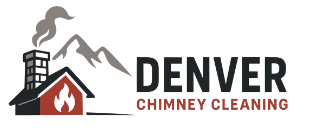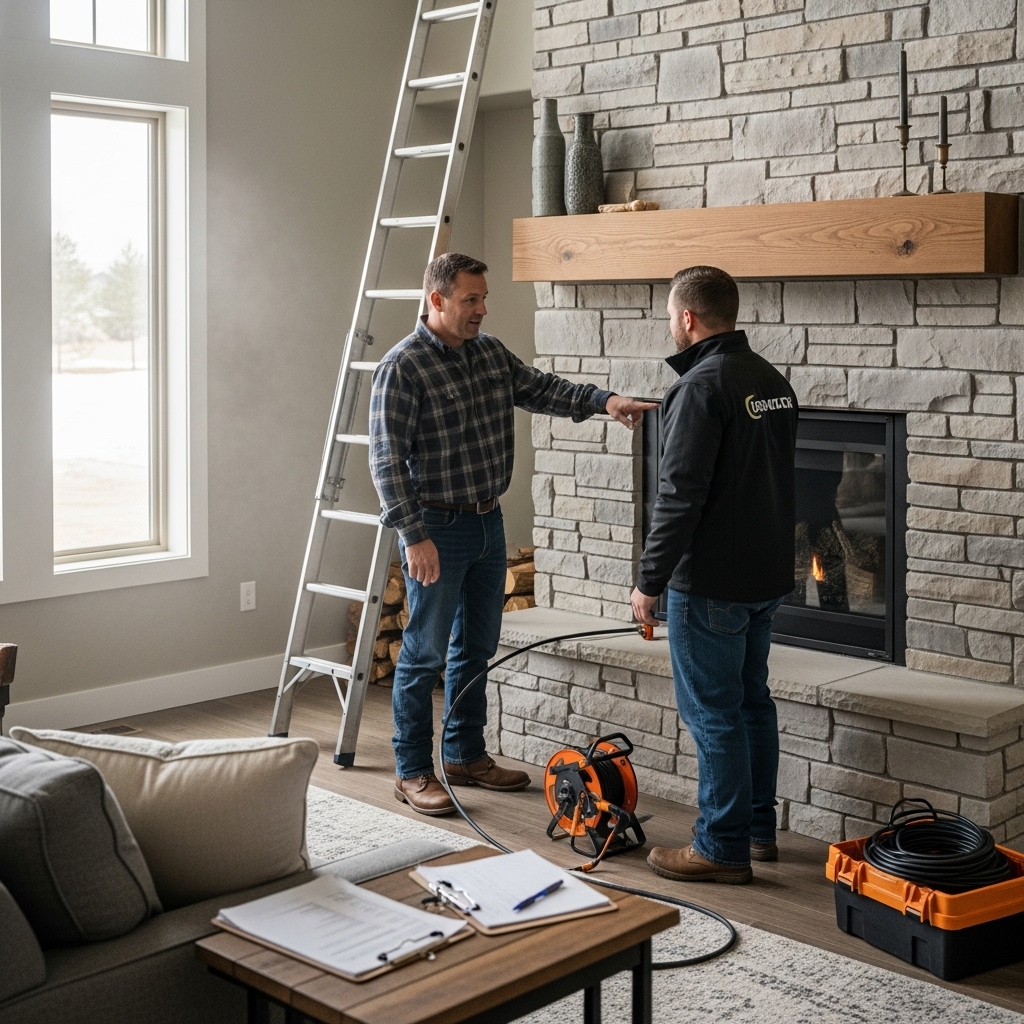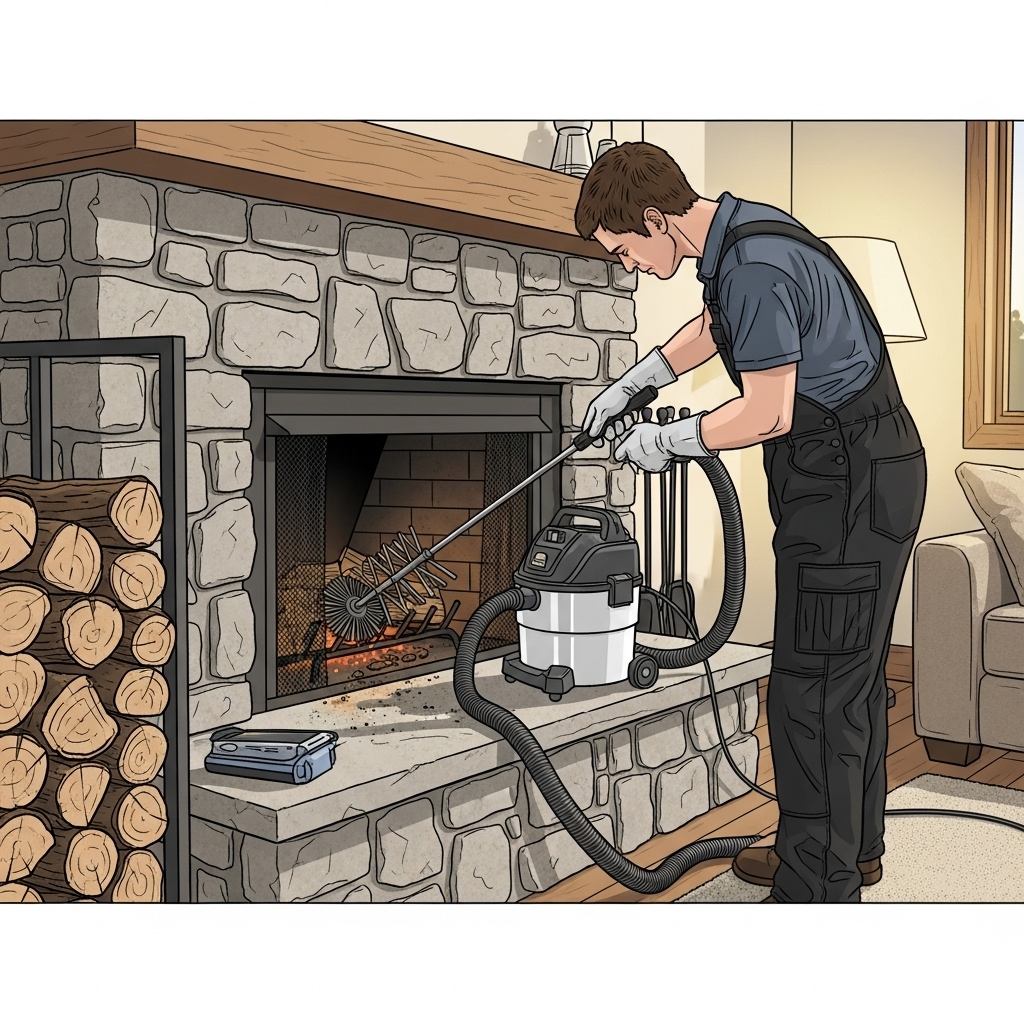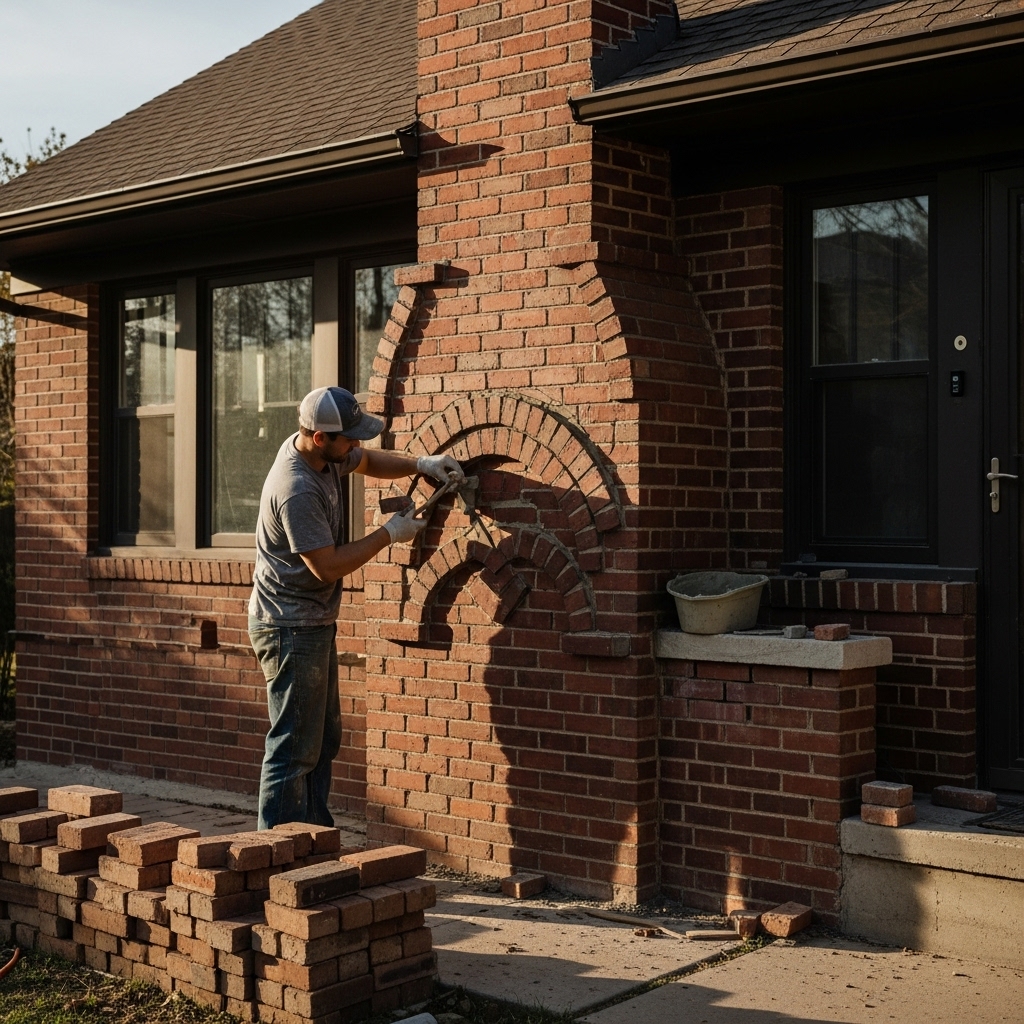Understanding Chimney Inspection Cost in Colorado
When you own a fireplace or heating appliance in Colorado, a routine inspection is one of the most important habits you can establish. Beyond the warmth and ambiance, a chimney is a hard‑working system that manages heat, smoke, and potentially harmful gases. An inspection ensures that system is functioning safely and efficiently, while also helping you plan for maintenance and long‑term value. If you are starting to research options, it helps to understand what influences budgeting for an inspection, how to prepare, and how to get the most from the process. To make the process easier from start to finish, many homeowners rely on local chimney inspection services that are familiar with Colorado’s climate, altitude, and building practices.
This guide explains the elements that typically shape the overall outlay for a chimney inspection in Colorado, without quoting numbers. You will learn about the levels of inspection recognized by industry standards, what an inspector actually evaluates, and why the timing of your appointment matters. You will also find practical advice about preparing your home, interpreting the inspection report, and planning follow‑up maintenance. By the end, you will have a clear understanding of how to approach inspections confidently and how to prioritize safety while keeping your household running smoothly.
What Influences Chimney Inspection Budgets in Colorado
While every home is unique, certain themes consistently shape what you can expect when planning for a chimney inspection in Colorado. The type of appliance attached to your venting system is a major driver. Traditional open masonry fireplaces, wood stoves, pellet stoves, gas fireplaces, and high‑efficiency inserts all vent differently and expose the chimney to different temperatures and byproducts. Construction details such as the height of the chimney, the number of flues, roof pitch, and accessibility also affect the scope of work, setup time, and safety precautions required for a thorough evaluation. Older homes, especially those with original masonry or clay tile liners, may require more detailed inspection steps than newer systems that incorporate stainless steel liners and factory‑built components.
Environmental conditions are another factor. Colorado’s freeze‑thaw cycles can drive moisture into masonry, and that expansion‑contraction pattern may cause mortar joints to open or crowns to crack. In wildfire‑prone or high‑wind corridors along the Front Range and on the Western Slope, inspectors often pay special attention to spark arrestor screens, caps, and flashing. High‑altitude combustion and drafting behavior also add unique considerations that experienced inspectors account for when assessing performance and safety.
Understanding the Inspection Levels
Industry standards commonly describe three levels of chimney inspection. A basic visual inspection reviews readily accessible portions of the chimney and appliance connections. A more detailed evaluation involves inspection of accessible areas in attics, crawl spaces, and basements, as well as internal views using optical tools. The most comprehensive level may require limited removal of components or building materials to examine concealed areas where hazards are suspected. Which level makes sense for your situation depends on factors such as a change in fuel type, a recent property purchase, a major weather event, or signs of damage like staining, odors, or smoke spillage. A reputable inspector will recommend an appropriate level based on your goals and the condition of the system, and will explain the reasoning in clear terms.
What Inspectors Evaluate
A thorough chimney inspection looks at the system from top to bottom. On the exterior, the professional assesses the crown or chase cover, cap and screen, masonry or factory‑built shell, flashing, roof interfaces, and clearances to combustible materials. Inside the home, the evaluation includes the firebox, smoke chamber transition, damper operation, lintel and hearth extension, and the throat or connector. The flue interior is checked for soot and creosote accumulation, glaze formation, liner continuity, offsets, and obstructions. For gas appliances, the inspector verifies proper venting configuration, connector sizing, and the presence of required shutoffs and sediment traps. For wood‑burning units, the inspection confirms the condition of baffles, gaskets, doors, and combustion air pathways. Finally, the inspector looks for moisture intrusion, rust, efflorescence, and any signs of past chimney fires.
Colorado Climate Considerations
Colorado’s varied climate places special demands on chimneys. Arid sunshine at elevation can rapidly degrade exposed sealants. Afternoon thunderstorms and spring snow add moisture, which penetrates hairline cracks and expands during freezing nights. Over time, these cycles can contribute to spalling brick faces, deteriorated mortar joints, and compromised crowns or chase covers. Strong winds can loosen caps, and drifting embers during wildfire season make properly sized spark arrestors essential. An inspector familiar with these realities will recommend targeted maintenance that preserves the structure and supports safe operation over many seasons.
Scheduling and Seasonal Timing
The best time to schedule is before peak burning season. An inspection well ahead of winter ensures you have time to complete any recommended maintenance and to address safety issues before you need heat. Spring and summer appointments also allow for roof access without weather delays and often provide brighter conditions for exterior evaluation. If you burn heavily through the winter, a post‑season inspection can document wear, confirm cleanliness, and set you up for an easier fall. Mid‑season appointments are appropriate any time signs of trouble arise, including persistent smoke rollout, unusual odors, animal noises, or visible debris in the firebox.
Homeowners frequently ask whether a heavily used wood‑burning fireplace requires more frequent evaluation than a primarily decorative gas unit. The answer typically depends on usage patterns and past inspection results. A heavily used wood stove may produce more creosote and warrant closer attention to the flue and baffles. A gas fireplace, meanwhile, may accumulate lint or experience issues with vent components and seals. Either way, a routine inspection cadence promotes safety and extends the life of the system. When in doubt, consult a qualified professional for a recommendation tailored to your home and habits, or consider seeking mid‑year guidance from local experts who provide professional chimney inspection with an understanding of regional conditions.
Preparing for Your Inspection
Preparing your home helps your appointment go smoothly. Avoid using the fireplace or stove for at least 24 hours beforehand so the system is cool to the touch. Remove ash from the firebox and move furniture or decor at least a few feet away from the hearth to provide clear access. If possible, clear items from the area around the base of the chimney in attics or basements. Secure pets and plan for someone to be home, especially if the inspector needs access to multiple levels or utility areas. If you have previous reports, permits, or appliance documentation, have those available. The more context you can provide, the more efficient and informative the inspection will be.
What a Clear Report Looks Like
After the inspection, you should receive a report that documents findings, includes photos where practical, and describes the condition of each component in everyday language. Look for specific, actionable recommendations prioritized by safety, performance, and longevity. Clear next steps might include cleaning, minor repairs such as crown sealing or flashing touch‑ups, or larger projects like relining. The report should note any code‑related concerns and clearly state whether the system is ready for use or if remedial work is recommended before operation.
Common Findings in Colorado Homes
Inspectors in Colorado frequently encounter a few recurring issues. Creosote accumulation is common in systems that burn wood regularly, especially at low burn temperatures. Clay tile liners may show cracks or gaps at mortar joints, sometimes hidden until camera inspection. Crowns that were poured too thin or without proper expansion joints tend to crack, inviting water intrusion. Factory‑built chimneys may have chase covers that rust over time, allowing moisture to drip into the chase and cause staining or corrosion. Flashing can pull away at roof transitions in high winds. Wildlife entry, especially by birds or small mammals, can lead to nesting materials in flues. Each of these concerns ranges in severity, but the goal is always the same: identify issues early and correct them before they become safety hazards or cause structural deterioration.
Wood, Gas, and Pellet Considerations
Different fuel types create different inspection priorities. Wood‑burning systems require close attention to creosote glaze, smoke chamber transitions, and the continuity of the liner through offsets. Gas systems call for verification of proper venting, secure connections, and sealing at the firebox or insert surround to prevent room air from mixing with vent gases. Pellet appliances rely on small‑diameter venting that can accumulate ash and require careful inspection of seams and joints. If you transitioned from one fuel type to another, your inspector might suggest a more detailed review to ensure compatibility and safety, particularly if components were reused from a previous configuration.
Insurance, Real Estate, and Documentation
Documentation matters when buying or selling a home in Colorado or when dealing with insurance. A detailed inspection report provides a snapshot of system condition and demonstrates that you have taken reasonable steps to maintain safety. In real estate transactions, a more comprehensive inspection is often recommended to reveal concealed issues before closing. After a significant weather event or an accidental chimney fire, an inspection helps determine the extent of damage and informs any needed remediation. Keeping a file of reports, maintenance receipts, and photographs creates a helpful history that supports both safety planning and property value.
Comparing Proposals Without Focusing on Numbers
When you compare inspection proposals, concentrate on scope and quality rather than just seeking the lowest figure. Ask what areas are included, what tools will be used, how many photos you will receive, and whether the inspector is prepared to access attics and roof areas safely. Clarify the deliverables: a written report, recommendations prioritized by safety, and a conversation to review findings. Inquire about credentials and continuing education, and verify that appropriate insurance is in place. This kind of apples‑to‑apples comparison helps you see the value of a thorough inspection and supports smart stewardship of your home.
Long‑Term Planning for Safety and Performance
An inspection is not just a one‑time event; it is part of a cycle of care that keeps your heating system safe, efficient, and enjoyable. By building a routine cadence into your household maintenance calendar, you minimize surprises and spread out projects in a manageable way. Schedule ahead of busy seasons, coordinate inspection with cleaning as recommended, and budget time for small repairs that prevent larger ones later. Over years of homeownership, this approach preserves the integrity of your chimney, supports clean combustion, and provides peace of mind during winter storms when you rely on your fireplace or stove the most.
Frequently Asked Questions
Question: How often should a chimney be inspected in Colorado? Answer: Industry guidance recommends yearly inspections for systems that are used, with timing adjusted for your usage patterns and past findings. Heavy wood burning or evidence of prior issues may suggest more frequent checks.
Question: What are signs I need an inspection sooner than planned? Answer: Persistent odors, smoke spillage, visible cracks, unusual stains on walls or ceilings near the chimney, animals entering the flue, or a change in performance are all reasons to schedule promptly.
Question: Do gas fireplaces really need inspection if they look clean? Answer: Yes. Gas units can have venting or sealing issues that are not obvious to a casual glance. An inspection confirms safe venting of combustion byproducts and verifies the integrity of components and clearances.
Question: Can I skip inspection if I rarely use the fireplace? Answer: Even limited use does not eliminate environmental wear from weather, expansion and contraction, and potential wildlife entry. A periodic inspection confirms the system is ready when you need it.
Question: Will the inspection include cleaning? Answer: Inspection and cleaning are related but distinct. Many homeowners coordinate them, but whether both occur during the same visit depends on findings and your scheduling preferences.
Question: What if my chimney is hard to access? Answer: A qualified professional will discuss safe access methods and may use specialized ladders, roof anchors, or camera tools. If any areas are inaccessible, the report should clearly state the limitations.
Bringing It All Together
Colorado’s climate, altitude, and strong seasonal swings make a well‑maintained chimney an essential part of home safety and comfort. An informed approach to inspection takes into account your appliance type, construction details, and environmental realities. With clear preparation, careful comparison of professional services, and a habit of documenting findings, you can enjoy reliable performance year after year. The key is to start early, ask good questions, and follow through on recommendations that protect your home and family.
Ready for Safer Fires This Season?
If you are preparing for winter or wrapping up a long burning season, now is the ideal time to book an appointment with a qualified local team. Make your next burning season easier, cleaner, and more dependable when you take a proactive step and schedule a chimney inspection with a trusted Colorado provider.




